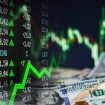Understanding Economic Indicators for Active Traders
Successful trading involves an in-depth knowledge of market mechanics, trends, and external factors that may impact your buying or selling decisions. Among the most critical factors to consider are economic indicators, data sets published by various sectors of the economy that provide keen insight into economic health and future market directions.
Introduction
Active traders rely heavily on these economic indicators to make informed trading decisions. This post aims at providing an understanding of what these economic indicators are, how they function, and why they should matter immensely to active traders. While these indicators won’t provide guaranteed forecasts, they offer a reliable absolute foundation for making investment choices.
What Are Economic Indicators?
Economic indicators are systematic data points reflecting the performance and health of a country’s economy. These can be divided into three categories: leading indicators, coincident indicators, and lagging indicators.
-
Leading indicators can predict future economic performance in terms of key indices such as GDP or inflation rates. Some of the leading indicators include the stock market performance, building permits, manufacturers’ new orders, and money supply changes.
-
Coincident indicators reflect the current state of the economy. Examples include industrial production, personal income, and retail sales.
-
Lagging indicators tend to change after the economic performance has already been documented. They include the unemployment rate, corporate profits, and labor cost per unit output in manufacturing.
The Significance of Economic Indicators for Traders
For traders, these indicators provide insights into potential market movements and volatility. Here’s a brief overview of how these indicators can influence trading decisions:
-
Economic Growth – Indicators like GDP and industrial production help forecast the economy’s growth. When the economy is growing, company earnings are likely to rise, pushing up stock prices.
-
Interest Rates – Considered both a leading and lagging indicator, interest rates can impact the costs of borrowing, expenditure and investment. When rates are low, borrowing is cheap, fueling spending on big-ticket items and bullish markets. Conversely, elevated rates can indicate economic cooling.
-
Inflation – When inflation rates rise, there’s usually an upwards pressure on interest rates to preserve economic stability. For traders, rising inflation can harm bond prices but may drive commodities like gold upward.
-
Employment Data – High employment rates often indicate a robust economy. Conversely, increasing unemployment rates could signify an impending economic downturn, serving as a flashing red light for traders.
-
Consumer Confidence – This indicator reflects the optimism or pessimism consumers have about the economy’s future. Increased confidence boosts spending, which can lead to a positive cycle of economic expansion.
Conclusion
Economic indicators offer an eagle-eye view of the economy and are invaluable tools for any active trader. Deciphering their impact on potential trading decisions can be complex, but they’re crucial to developing refined, data-driven trading strategies. By observing and understanding these indicators, traders are better equipped to predict market movements, manage risk, and seek out profitable opportunities. As always, nothing is guaranteed in trading, but keeping an eye on economic indicators can certainly stack the deck in your favor.










